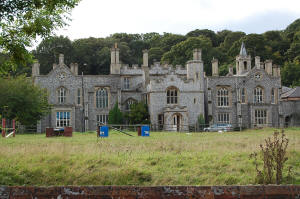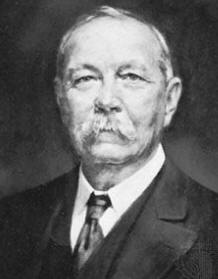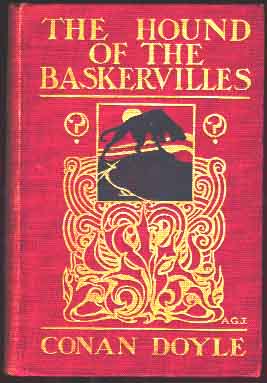| Cromer Hall is the home of the Cabbell Manners
family and lies just outside of the town centre. The
original hall was destroyed by fire and was rebuilt in
the 1820s in Gothic revival style using a design by the
Norfolk-born architect William John Donthorn.

Cromer Hall
The hall also boasts one of Norfolk's most famous
literary connections. In 1901 Arthur Conan Doyle returned from South Africa
suffering from enteric fever and to recuperate he decided
to take a golfing holiday in North Norfolk. He was
accompanied by his friend the journalist Bertram Fletcher
Robinson and stayed at the now demolished Royal Links Hotel
in Cromer.

Sir Arthur Conan Doyle
During their visit to Cromer, Conan Doyle and Betram
Fletcher Robinson had dinner with Benjamin Bond
Bond Cabbell at Cromer Hall. During dinner Cabbell told them about his
ancestor, Richard Cabbell - Lord of Brook Manor and
Buckfastleigh - who had been killed by a devilish dog. The
story went that Richard Cabbell's wife had been
unfaithful and that, after beating her, she had fled
out onto Dartmoor. Cabbell pursued her and
stabbed her - but while committing the murder his wife's
faithful dog attacked him and tore out his throat.
The
ghost of the dog was said to haunt Dartmoor and to
reappear to each generation of the Cabbell family. It is
clear that Richard Cabbell became the model for the evil Hugo
Baskerville in Conan Doyle's classic tale.
There is also another fascinating Norfolk connection
- namely that the coachman who drove Conan Doyle to Cromer Hall was
apparently called Baskerville. Conan Doyle often drew
his character's names from real life - as demonstrated
by his use of the name Cubitt in The Dancing Men
- see Happisburgh.
Conan Doyle would almost certainly have been aware
too of the Norfolk legend of Black Shuck - the terrible
Hound which terrorised parts of the county. The legend
went that anyone looking into the eyes of the hound only
had a year to live.

Black Shuck is said to haunt Beeston Bump - which is
not far from Cromer. Black Shuck is also said to have
appeared to the townsfolk of Bungay in 1577 inside St.
Mary's Church. The dog is commemorated in the town sign
and in a weather vane on top of the market place.
Conan Doyle's description of Baskerville Hall bears an
uncanny likeness to Cromer Hall:
|

